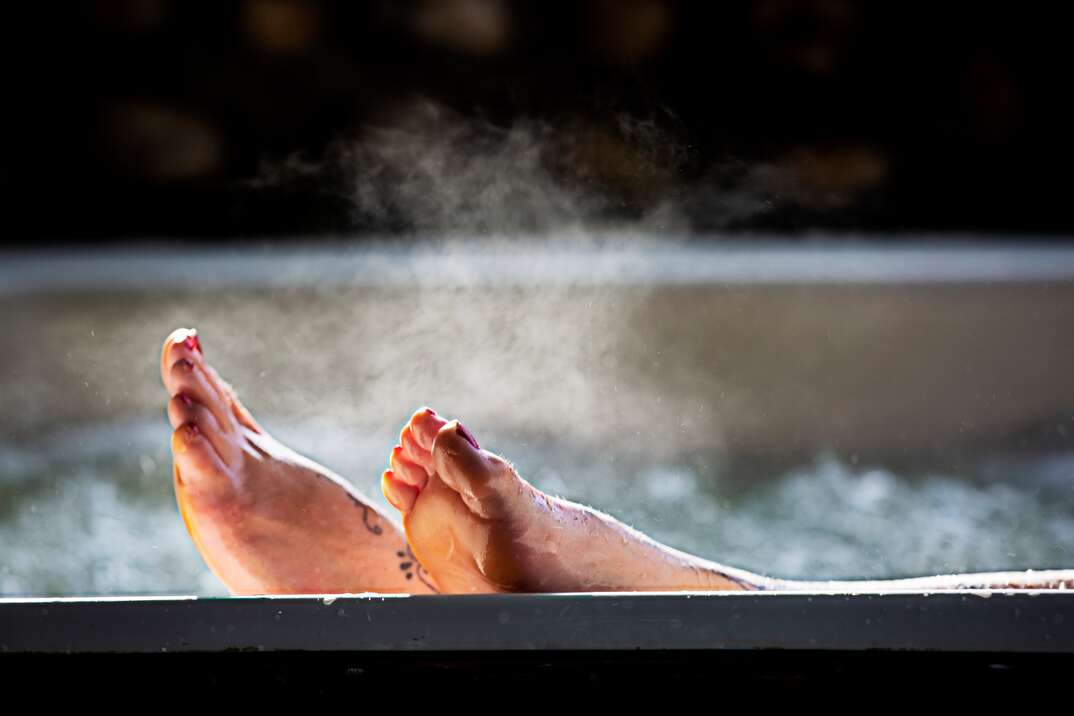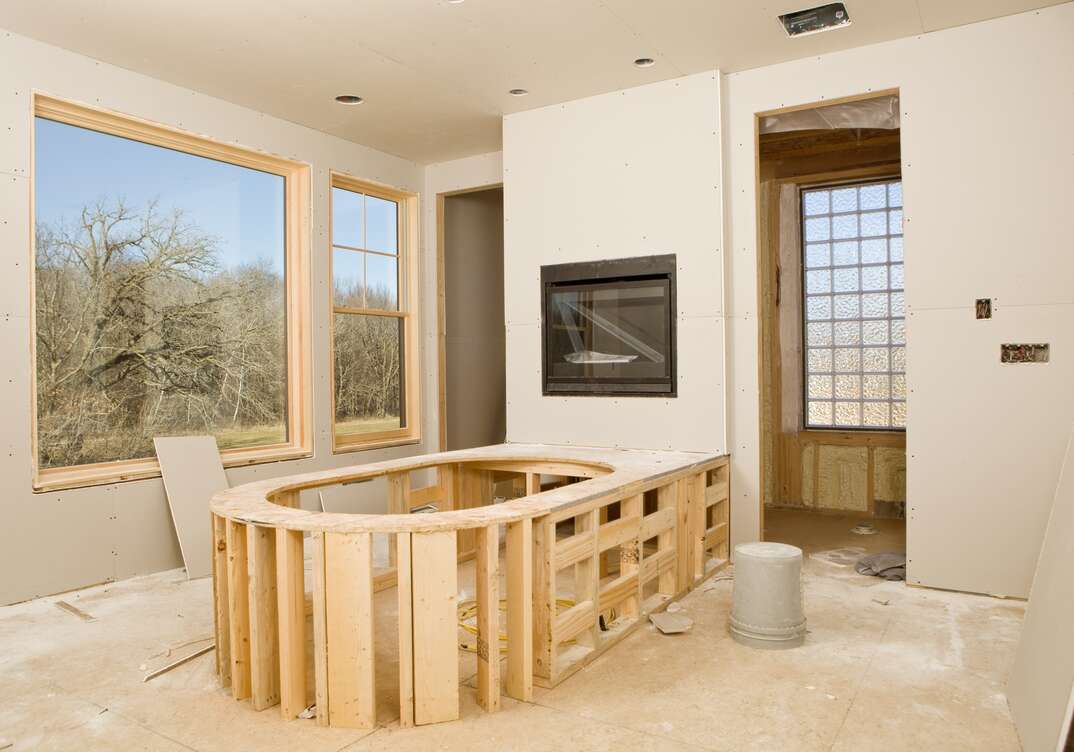How to Install an Air Tub

If you’re looking to create a tranquil spa experience at home, an air tub may be just the thing you need. These bubbling bathtubs are designed for relaxation and can be a great alternative to whirlpools. Plus, they come in a wide array of sizes and styles, so there’s sure to be one that fits both your aesthetic and your budget.
This May Also Interest You: How Much Does It Cost to Install a Whirlpool Bathtub?
Air tub installation is usually best left to the professionals. However, if you’re an experienced DIYer with carpentry, plumbing and electrical know-how, you may be able to put in an air tub yourself. Read on to learn several installation methods.
What Is an Air Tub?
An air tub creates millions of warm, soothing bubbles by blowing heated air through adjustable jets. These tubs are designed for relaxation, providing a gentle, customizable massage. They come in a multitude of sizes, shapes and materials, and may be used indoors or outdoors, depending on the model.
DIY Air Tub Installation
Because air tub installation can be tricky — often involving electrical and plumbing work — most homeowners should consider hiring a professional installer. Some tub warranties may also be void unless your tub is professionally installed, so be sure to check before you attempt to do it yourself.
If you’re an experienced DIYer who wants to save some cash by doing your own air tub installation, make sure you have the proper electrical and plumbing permits. Then, install your tub using one of the following methods.

Drop-In Method
For the drop-in method, your air tub will be set into a pre-existing frame. Keep the manufacturer's instructions handy, and follow these 11 steps:
- Make sure your floor is structurally sound and capable of supporting a tub's weight, which can be upwards of 500 pounds when filled with water.
- Build or purchase an enclosure for your tub. Its inside dimensions must match the tub’s outer dimensions, and the frame should be high enough for the tub’s rim to rest above the finished deck. Refer to the manufacturer’s instructions for specific measurements.
- Cut out a drain opening on the subfloor. It should reflect the position of the tub drain.
- Install the tub’s drain assembly according to the manufacturer’s guidelines. Always dry-fit the assembly before gluing it together. Make sure everything fits tightly, then secure it to the tub.
- Line the tub’s frame with plastic sheeting and shovel in mortar to create a mortar bed. The appropriate depth should be determined by the height of the enclosure and the manufacturer's guidelines.
- Place spacers along the deck and then set the tub gently into the enclosure, letting it rest on the spacers. You may need a helper or two for this step.
- Make sure it's completely level, then let the tub sit until the mortar hardens.
- Attach the tub’s rim to the enclosure, using the hardware provided by the manufacturer.
- Using silicone caulk, seal along the rim’s exposed edges to prevent water intrusion.
- Hook up the plumbing and electrical. This may involve connecting the drain to the drain line, installing water supply lines and hardware such as a tub spout, showerhead and shower-diverter valve.
- Finish off the tub surround with tiles, wood panels or another material of your choice.
Alcove Method
An alcove tub doesn’t require a deck because it’s surrounded on three sides by walls. It should fit snugly, so be sure to take precise measurements and purchase the right size tub. Then, install your bath following this method:
- Make sure the walls are perfectly straight, and the alcove floor is level and strong enough to hold the weight of a filled tub. To reinforce the floor, lay down plywood using construction adhesive and deck screws.
- Install the drain and water supply lines and tub hardware such as bathtub stoppers and tub spouts. Although this step may be completed after the tub is installed, completing it beforehand reduces the risk of damage to your new tub.
- Create an access panel for the tub valve behind the tub wall or in an adjacent closet. This provides easy access for any subsequent repair work without having to cut into a wall.
- Dry-fit the bathtub to make sure it sits snugly in the alcove. If it doesn’t, make adjustments to the wall framing as necessary.
- If your tub doesn’t have feet for support, create a mortar bed. If you aren’t sure whether your tub requires a mortar bed, check the manufacturer’s instructions for your model.
- Set the tub, making sure it’s level, then secure it to the walls.
- Hook up the plumbing.
- Finish off the walls surrounding the tub with a waterproof wall covering such as fiber cement board.
- Seal the exposed edges using silicone caulk.

Freestanding Air Tub Installation
Freestanding air tubs are typically the easiest models to install because they don’t require any framing. To install a freestanding tub, follow these steps:
- Mark the tub’s future location on the floor and rough in the drain.
- Install the plumbing.
- Set the tub in place and make sure it’s level.
- Use plumber's tape or thread sealant on threaded connections that don’t have a rubber sealing gasket. Use silicone sealant on the underside of the drain flange, then thread it into the drainpipe.
- Tighten all the connections.
- Apply silicone adhesive around the tub’s base.
Undermount Installation
When you choose an undermount bath, a decorative casing covers the entire lip of the tub and gives it a sleek, seamless appearance. However, because the tub’s controls must be relocated to the cover, professional installation is recommended for most undermount setups.
No matter how your tub is installed, you should always fill the tub after installation is complete to check for leaks and to make sure the drain works properly.
More Related Articles:
- How Much Does It Cost to Replace or Install a Bathtub?
- How to Clean a Jetted Tub: 6 Steps to Bath-Time Bliss
- What Is a Shower Diverter Valve (and Why Should You Care?)
- How Much Does a Shower Remodel Cost?
- How Much Does It Cost to Install an Exhaust Fan in the Bathroom?
Which Is Better: Air Tub or Whirlpool?
Air baths and whirlpools are both jetted tubs, but they operate differently and create distinct sensations. Whereas air tubs use air to create a gentle effervescence, whirlpools jet out water at high pressure to massage the bather. Although this difference doesn’t necessarily make one type of tub better than the other, air jet tubs do have several advantages: They’re quieter, cost less, require less upkeep and may be used with certain bath products that aren't compatible with whirlpools.
Ultimately, when deciding whether an air tub or a whirlpool is best for your bathroom, the main consideration should probably be personal taste. Whereas bathers looking to relax may prefer a bubbling air bath, individuals seeking an intense massage for sore muscles may want to opt for a whirlpool. Those who want more versatility can choose a combination tub, which lets you choose between air and water jets.
Are Air Tubs Worth the Money?
Because air bathtub prices vary depending on the shape, size, material and jet system of the unit, almost anyone can find one that fits their budget. Whether an air tub is worth the money really depends on what you’re looking for. For basic bathroom functionality, a standard tub is much friendlier to your budget. However, if you’re willing to spend more on your bathroom renovation to create a luxurious at-home spa experience, an air tub may be worth the cost.
Since we’re all home now more than ever, being prepared for unexpected home repairs with a plan from HomeServe is important. Having a plan in place gives you peace of mind knowing that you can simply call our 24/7 repair hotline for covered breakdowns. See what plans are available in your neighborhood.

